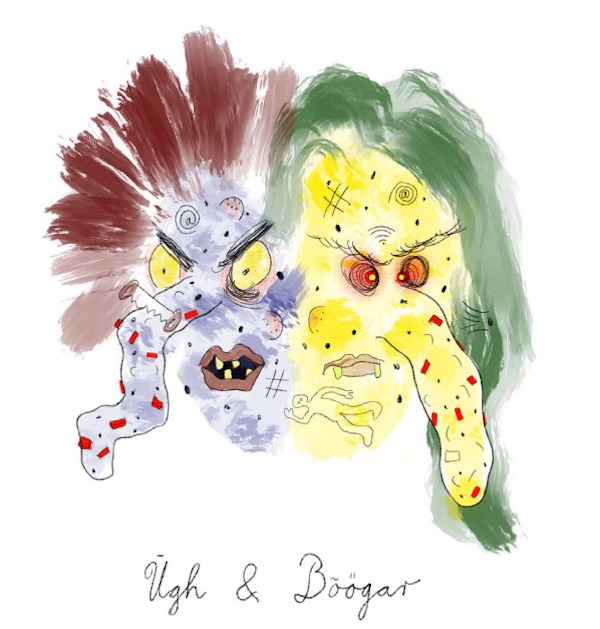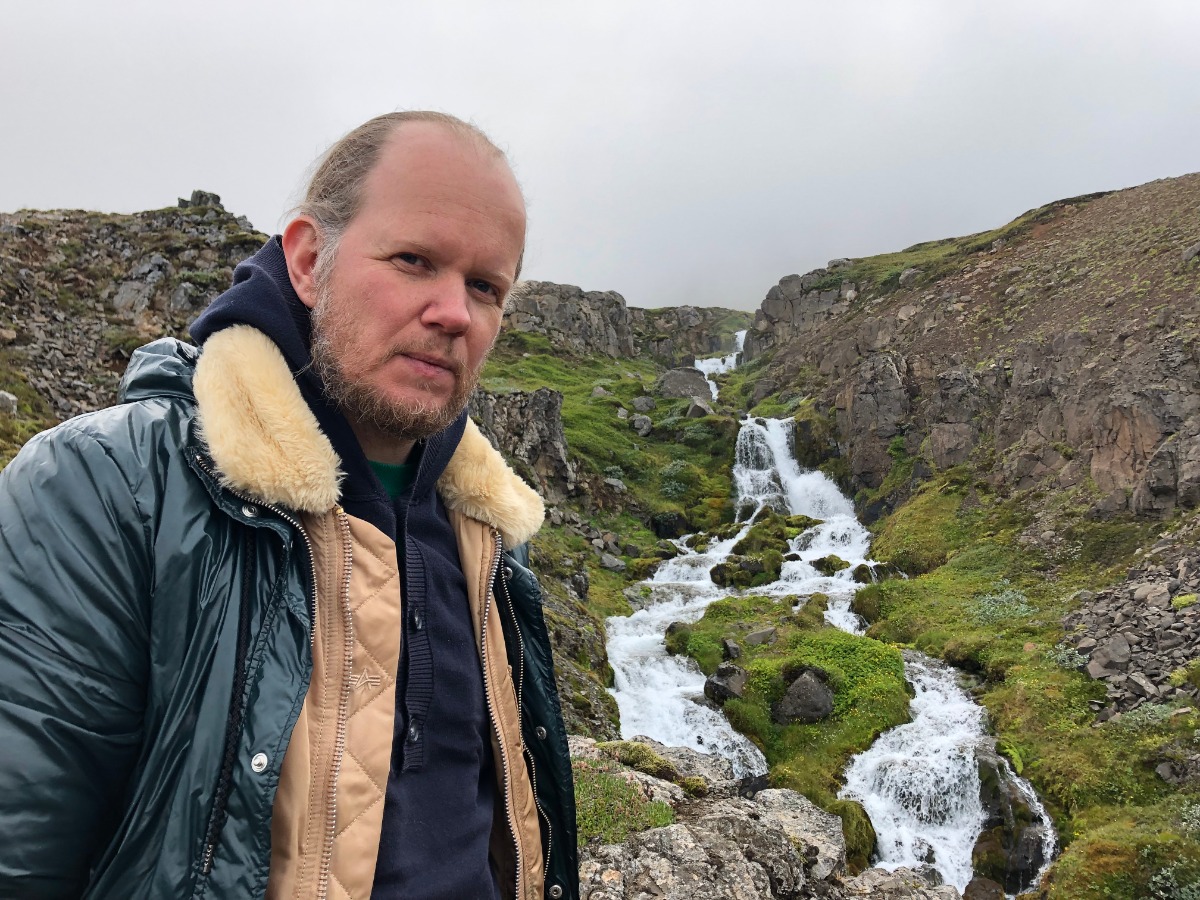
What artists are doing now. The multimedia artist Egill Sæbjornsson in Reykjavik
An inspiration and mutual solidarity project for the creative industries
In the current situation, clearly our top priority is to take care of our families, friends and fellow citizens. Nevertheless, while public life is paralyzed and museums, galleries and cultural institutions are closed, in many of us neither the urge to work nor the creative spark have disappeared. In fact, quite the opposite is happening in what is turning out to be a time that befits self-reflection and the generation of new ideas for the future. Although we are at home and self-isolating, we all – artists, creatives and Arterritory.com – continue to work, think and feel. As a sort of gesture of inspiration and ‘remote’ mutual solidarity, we have launched the project titled What Artists Are Doing Now, with the aim of showing and affirming that neither life nor creative energy are coming to a stop during this crisis. We have invited artists from all over the world to send us a short video or photo story illustrating what they are doing, what they are thinking, and how they are feeling during this time of crisis and self-isolation. All artist stories will be published on Arterritory.com and on our Instagram and Facebook accounts. We at Arterritory.com are convinced that creativity and positive emotions are good for the immune system and just might help us better navigate through these difficult times.
From his home in Reykjavik, Icelandic artist Egill Sæbjörnsson answers a short questionnaire by Arterritory.com:
Are you working on any projects in your studio right now? If so, could you briefly describe them?
Because of the Covid 19 crisis, I flew to Iceland on March 13 to stay in my small flat in Reykjavik with my girlfriend and her two sons and a cat. I try to work remotely, although everything has slowed down a lot. One of the things I noticed is that the cat is in constant quarantine. It has become more and more clear that most things we do are part of some system and everything has a cost and is interlinked with the economy and money. I have been paying attention to things that are still outside of that system. For example, the sun gives us everything for free. There is no charge to look at the stars or in the eyes of a baby. Cats also don’t give a fuck about this system. Nor do the other animals. It reveals a bit about who we really are, but we get locked inside this chase and competition of city life – after we became agricultural, met the wolf, and started to be territorial like him.
Another thing I have taken time to work on is an illustrated book about the evolution of mankind. There is an unbroken line from us down to the single cells, and from there, into the kingdom of stones, crystals and chemicals. This has to be acknowledged. It might be a crazy book that people will laugh about in the future, but now it might be an eye opener. I can’t leave this thought alone. We need to erase the line between ‘living’ and ‘dead’ material. The question ‘Is there life on Mars?’ is easily answered: Yes, all of Mars is alive. We just still haven’t acknowledged this.
In November I will do a Lecture Performance for Virtual Reality that I first did for Johann König when he asked me to do a lecture performance in his gallery in 2011. The performance has been adapted, rewritten, and presented once as an installation – Time Bridge at Salon Dahlman in Berlin. It is about expanding our notion of ‘contemporarity’, which is a term that doesn’t exist but I use it when referring to Contemporary Time, or the era that we are part of – the time we are physically alive inside this universe. Time does not exist, only things move. Time is an invention, but the movement of things is true. Anyway, in this VR piece I try to make people walk beyond their lifetime, but to understand it as if it was part of their lifetime. They go backwards to the time of the building of the Eiffel Tower for example, to Napoleon and also into the future where they can plant a seed for things and events that are yet to come. It’s also important to see things in a bigger picture, and to be aware that what we do in our era is not private – we are in it together with the people that come after and the ones that were before.
Perhaps the largest work I’m working on at the moment is a large swim-in sculpture for Therme Art Projects. The working title is The Mother and it’s a 15-metre-tall and 15-metre-wide dome. Therme Art Projects is a new organisation that wants to integrate artists into the design process of wellness and water parks around the world. I think they are building a few at the moment and have others in the pipeline.
It has an entrance through water, so it’s like going back into the womb and that’s how the name came about. Inside the dome is a pool and a fountain at the end with real water and self-generative projected video water. That means that the video never repeats and feels alive, just like the real water. It’s not a video file that plays on loop – it’s self generative; we are making a program that generates an endless stream of new imagery, similar to the work I did for the Robert Koch Institute in Berlin in 2014.
As the projection is self-generative, it never repeats the pattern and one can sit there for 100 hours and never see the same thing twice.
Here we are making tests with changing the stone surface of the fountain, and also playing with how the shape of the fountain will be – it’s not clear yet. There might be clouds and this small living world that never repeats, just like real life. The Mother is also a bit like those glass bowls with a small idyllic world inside, the ones you shake and then the ‘snow’ falls inside it. In this case it will be water animations mixed with real water.
This is a very exciting project, and the team working on it is great; it’s based in Berlin it’s been a pleasure to do this. I get an outlet for my obsession with materials and the use of stone and ceramics; I love to solve things and make the technology, practicalities, and the art itself all come together. The idea is that you sit inside, either in the pool or in the Romanesque amphitheatre, and watch the magic fountain.
It’s going to be quiet – a meditative temple to nature rather than any particular religion. We are going to use wood for the structure instead of concrete so that it’s more environmentally friendly. And the outside will be covered with wooden shingles, a traditional building material for houses in that area. It’s like magic how everything is coming together.
At the moment I’m trying to finish my album. It’s an LP with eleven new songs from 2018. It’s kind of like pop songs, both electronic and with live instruments, and a lot of singing. It’s a love album for people in my past, in the present, and to myself. Self-love – isn’t that the most important thing to find? At least self-acceptance gives one peace. When I was 16, I stopped watching TV in order to get homework for school done. And also my guru/meditation teacher said that TV had too much negative material, so I haven’t watched TV since then. Instead, I usually play guitar at nights, and out of that came the songs. I’m so happy that The Vinyl Factory is releasing it this time. They are an amazing label that has released a lot of music by visual artists as well as music by musicians. I’m an artist, not a musician, but in the end I don’t care anymore. It’s like gender studies – are you male or female gender? Who cares? A concert in London at the end of March was postponed, but that’s alright, I still have to get my head around how to do concerts.
Regarding the studio, it’s on hold; I am alone in Iceland and just writing emails, using Skype and Zoom and all those things. But then I am buying an old mill outside Berlin and am in the middle of planning the transformation of it into a studio. It’s very exciting. It’s in a town called Müncheberg, in an idyllic part of Brandenburg where a lot of people spend time in the summer. It’s nice – a train connection and an OK road lead to it. It will give me much more space to work and store and build up a proper archive.
I was very lucky to find it as I am tired of being pushed out of studio spaces inside the city, and I’m now planning the bathrooms, kitchen, machinery and more. I might also collaborate with some institutions and make a ‘maker space’, or change part of it into a residency like I did with my old studio in Berlin. That was a great adventure with up to 25 people using it at a time, with a music label, music studios, a video production company, a game developing company, illustrators, translators, other artists, and a very mixed and lively community. Those places are often not easy to manage, but it ended up being this happy building with all kinds of creatives and it created a great atmosphere for me and my team to work in.
Generally there are always a lot of things happening in parallel. And talking about parallel universes, my trolls Ugh & Boogar have also been busy. They did a concert with The Dallas Symphony Orchestra which ended as a disaster as they ate all the musicians and had to use the Youth Orchestra instead. Their latest achievement is a commission for a building in the harbour area of Vladivostok. It’s a 20-metre-tall crab-like building that can move its arms and inside is a restaurant. The whole skin around it will be done with a local ceramic factory using local clay. We will start designing it next year and realisation is planned for 2022.
The projects are many. I’m planning the design of a pencil sharpener with my friend, the architect Magnús Jensson, and together with the daughters of my brother I’m creating a clay sculpture called Mudpigs – it’s about a family of pigs that live in a world of mud. What do the Mudpigs watch on Television? Mud. What kind of sofa do they have in their living room? A mud sofa. What is the favourite food of the Mudpigs? Mud. What kind of humour do they have? Mud humour. With my mom I’m helping her to finalise a book about Sigríður Björnsdóttir, the former wife of Dieter Roth and the mother of all their children – Björn Roth and all the other ones. She was a pioneer in using art as therapy – she started on her own up in Iceland in 1952; she was an amazing woman. Hans-Ulrich Obrist just did an interview with her. We hope to release it soon. My mom and I are planning an exhibition in Iceland 2021 with Sigríður as a guest of honour, as the book hopefully will be out. It will be the third in a series of exhibitions based on my mother's works as an artist, and my grandmother, who was a housewife and farmer. Karen Wright, the curator and critic, started the series Mom’s Balls with us in 2018, and this will be Mom’s Balls III.
What is your recipe for survival in a time of almost only bad news?
Actually, it’s the best time, and maybe the best thing, that has happened to me for a long time. It’s a signal from the world that we need to change. And it shows us that we can change things if we stand together. And then we are first and foremost talking about the environmental issues. We need to implement new laws, new rules and new thinking. But these times make me think a lot. That’s why I’m filming my cat – he’s not part of our system or the way it was; he’s part of the old system, the animal kingdom. I also filmed the snow falling. The snow will be falling thousands of years after this Capitalism Era is over. And snow just comes from nature. And it’s for free. So beautiful. I know only one artist that stands outside the money and market system with his art. It’s ‘The Sixer'’ in Berlin. The guy that has been painting the number 6 all over Berlin since the 90s. He only paints on junk in the streets, and leaves everything for free, like the sun, which gives us sun rays for free. He’s the only one I know about that managed to step out of the system, but still live in the city. It’s amazing. And no one is talking about him. I still believe in our system; I don’t want to step out of it. We just need to learn and carry on. Anyway, in the dawn of the crisis my girlfriend called me and I went to Iceland the day after. Now I spend all my time with my girlfriend and her boys. We do homeschooling with them and work in between and go for walks. Most walks end with ice cream. My girlfriend’s boys go to school in Iceland, so we have been splitting time between Berlin and Reykjavik for a couple of years now. Being together so much has brought us closer and made a very good atmosphere. We almost want things to stay this way for as long as possible. We cook up to twice a day – homemade pasta, hamburgers, pizzas, things that the boys like, and we go for long walks and draw together, and then we play a lot with the cat because she is too shy to go alone out into the garden.
What is something that we all (each of us, personally) could do to make the world a better place when this disaster comes to an end? The world will no longer be the same again, but at the same time...there is a kind of magic in every new beginning.
It's said about illnesses in the body that it’s a signal that we are doing something wrong. When we find out what that is we can fix that and, in most cases, the illness vanishes. Like every person learns with experience throughout her life, humanity is also learning through experience. The time we have been polluting is very short, very very short, yet the consequences are severe. We will surely realise this to a pretty much full extent within some time, and change our practices and all will be good again. I hope we will take it to the full and restore the oceans with their former life, and even the rivers...let the predators back into nature, sharpen it up. We have come to the point that our own force is heading back on to us. And this crisis, bringing everyone so much together, has shown us that this is possible. Solving the environmental crisis is doable if we put our arses into it. It will take time to develop a new economic system that works with the environment, but this is possible, I’m sure of it. So, this is a magical moment, like Ernesto Neto, my dear friend, said in your interview with him: this is the serpent of the Earth biting us, letting us know what we have been doing wrong, and pointing us in the right direction. And like a teenager learning, we will understand this, and we will change it. Most teenagers, most people, learn and change when they do wrong. So the likelihood is extremely high that we will succeed. But it will not be without effort. Everyone has to be active as individuals, too. In 30 years we will look back and see that this crisis was necessary to learn and change. Bless the crisis and bless the good times – both are two ends of the same stick.
The art world and the culture sector is one of the most affected. What is the main lesson the art world should learn from all this? How do you imagine the post-apocalyptic art scene?
This will push the art world into a more digital environment. The whole world is going into a more digital environment. That’s the blessing of having kids around you – you learn so much from them. Those two 10- and 11-year-old boys in our home play Fortnite and Minecraft every minute that we let them. And they meet their friends in these worlds, run around fields and cities, gather things, build things, dance and dress up funny. Even though nothing replaces reality, when it’s off , the digital mode is quite enticing. And we are going to be able to solve things between continents not needing to spend a lot of time flying there. Meeting in digital takes less time, and the games and the enthusiasm of the children show us that this is the future, that’s clear. And the art world will go there too! Covid 19 is a signal from Earth to not to mess around with plants, agriculture, insects and wildlife too much. But we are not in an Apocalyptic time; this is a pretty well-measured crisis that shows us that we can, in an unprecedented manner, stick together and work together to solve global issues. And the most threatening issue is the so-called Environmental crisis. I still think people will fly and travel ten times more in the future, but with other technologies. Batteries are problematic, and the making of electricity often is as well. But we are teenagers that are learning, we have to carry on and find ways to live on the planet in as much balance as we can, and still have fun!
Egill Sæbjörnsson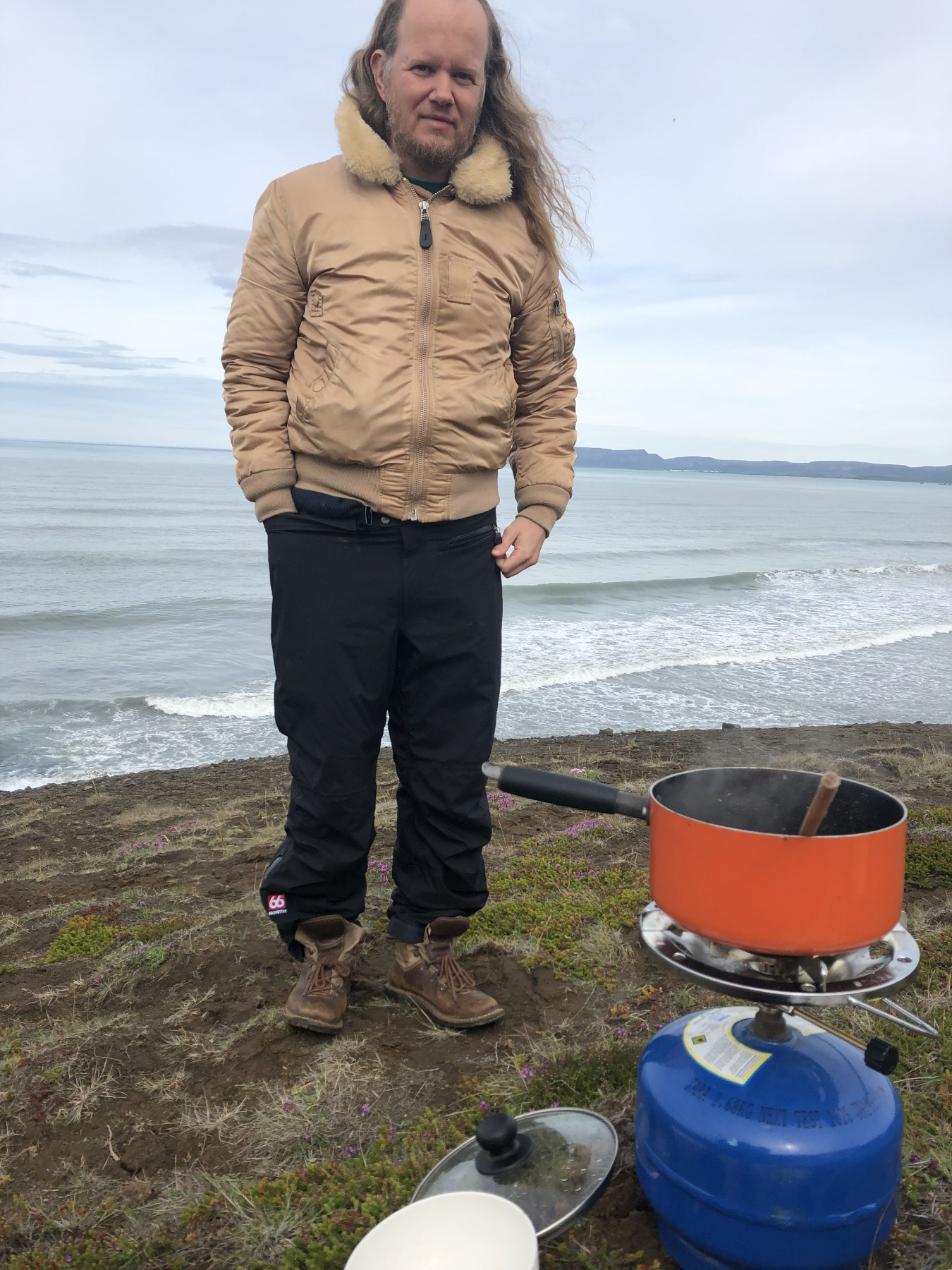
Studio building. The Old Mill in Müncheberg seen from outside. It’s so quiet and nice there. Countryside is not bad.
Egill Sæbjörnsson. Life is what happens while your are busy making other plans - work in progress - 2020
Sketch for The Mother / Courtesy Egill Sæbjörnsson & Therme Art Projects 2018 
Sketch for The Mother / Courtesy Egill Sæbjörnsson & Therme Art Projects 2018 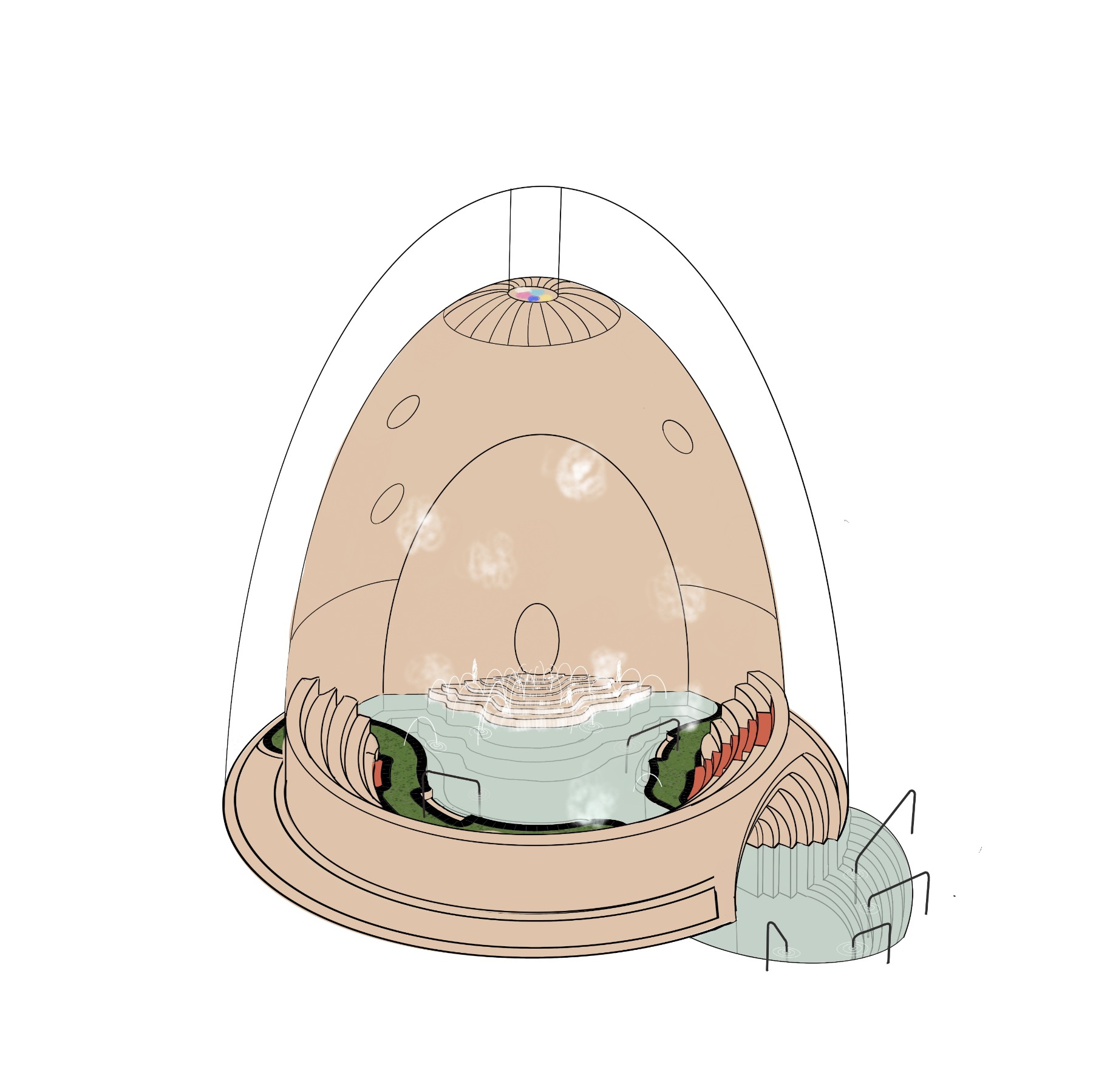
Egill Sæbjörnsson with Ugh & Boogar - Our Friend The Crab House Planned 2022 Vladivostok / Courtesy of the artists
Egill Sæbjörnsson with Ugh & Boogar - Our Friend The Crab House Planned 2022 Vladivostok / Courtesy of the artists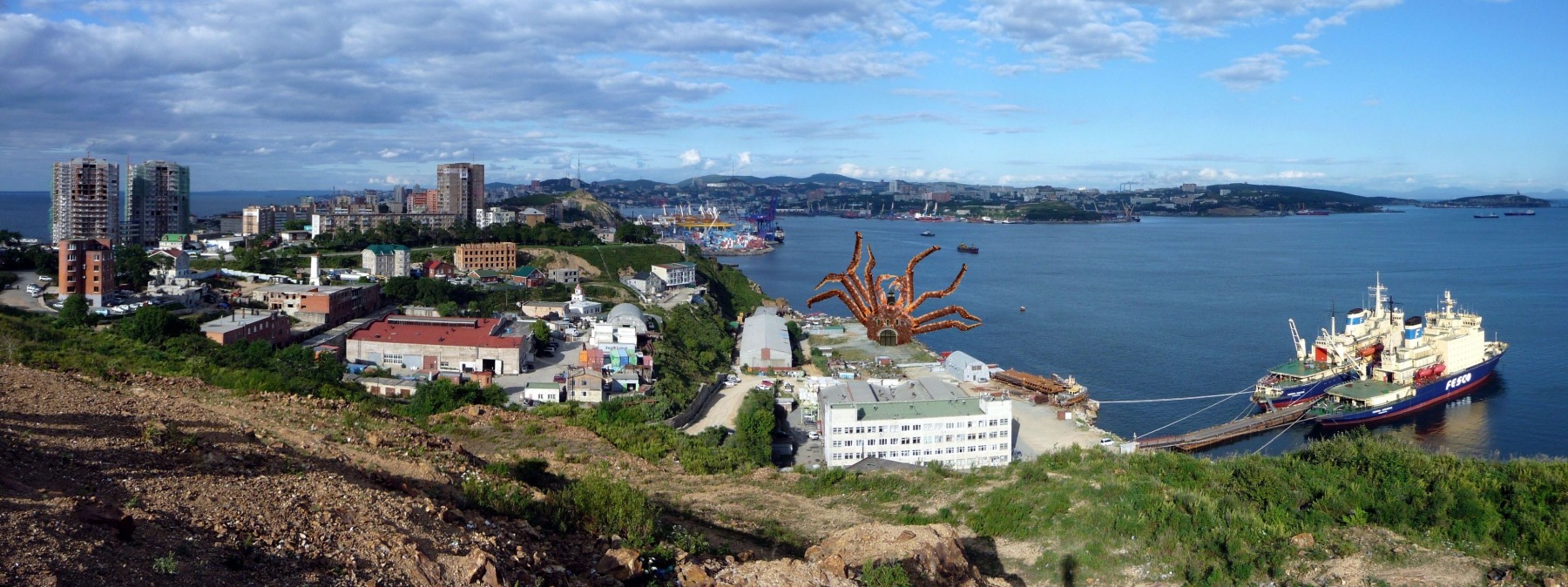
Egill Saebjörnsson ‘Trollbook’, 2017 / Courtesy and copyright the artist and i8 Gallery
Steinkugel. Permanent Self Generative Video Installation. Robert Koch Institute Berlin. 2014 / Photo © C Schlegelmilch / Courtesy of Egill Sæbjörnsson & Robert Koch Institute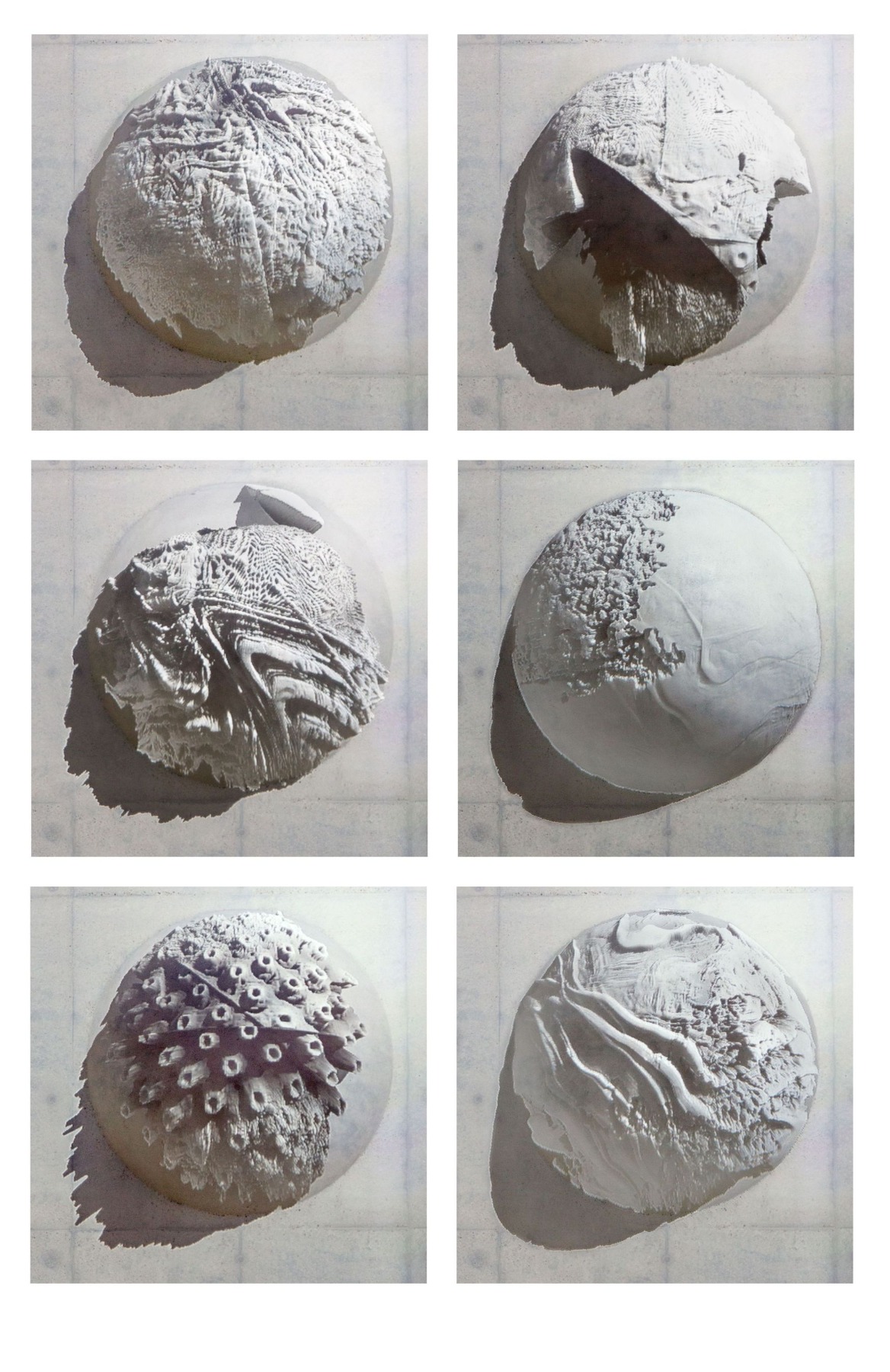
Steinkugel. Permanent Self Generative Video Installation. Robert Koch Institute Berlin. 2014 / Photo © C Schlegelmilch / Courtesy of Egill Sæbjörnsson & Robert Koch Institute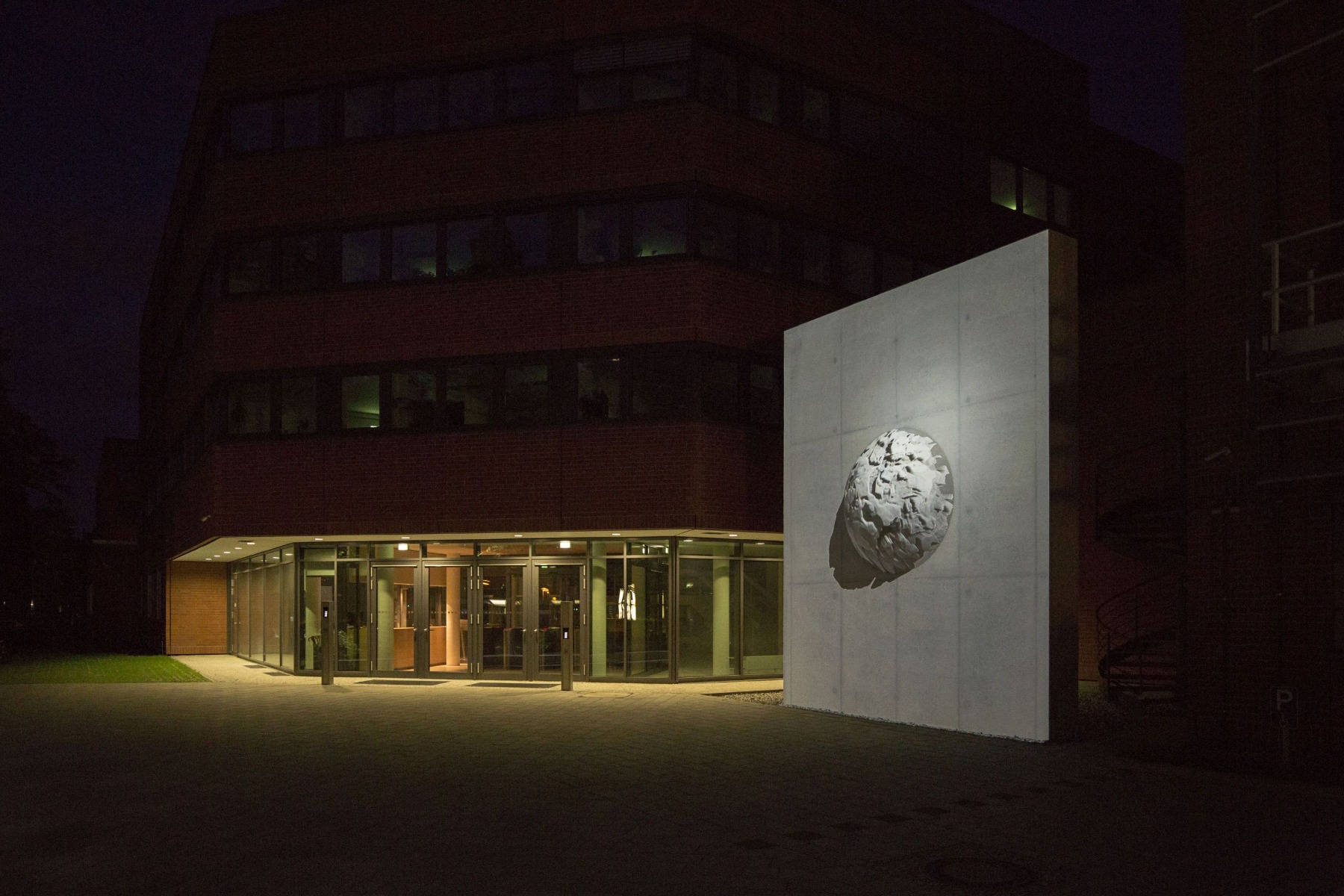
Egill Sæbjörnsson
***
Born in 1973, Egill Sæbjörnsson is an internationally acclaimed Icelandic multimedia artist and participant of the 57th Venice Biennale. He is based between Reykjavik and Berlin.
With a background in painting and drawing, Egill Sæbjörnsson's playful approach to art is a technological continuation of the more traditional art media. Natural and man-made objects, as well as childhood games, form the solid foundation of his artistry, while video mapping projections add a new and whimsical layer to his main topic – the relationship between humans and the environment. If objects could speak, would they tell us the same ideas that we project on them? Sæbjörnsson is interested in the connection between mental and physical reality; in the context of what we think and what is happening in the world around us.
If installation art comes from theatrical stage design, then Egill Sæbjörnsson celebrates exactly this turn in the visual arts. For him, artworks have always been in flux and have co-created us as much as we created them. In other words, ‘art is an independent species evolving together with humans’. According to the artist, art is like the dog that evolved from wild wolves when humans and wolves get together for some serious howling.
Just like Peter Pan, the free-spirited and mischievous boy, Searbjörnsson creates evocative visual adventures rich with the symbols of nature and Icelandic mythology. Occasionally Searbjörnsson invites the international art world to travel together to the never-before-seen places of his imagination. In 2019, Therme Group, a leading global technology company and integrator of wellness and entertainment concepts, officially announced its latest major art commission: an immersive water-based sculpture by Egill Sæbjörnsson.
In the summer of 2017 Sæbjörnsson, Iceland's representative at the 57th Venice Biennale, achieved worldwide recognition with his carnivorous alter ego: two grumpy, coffee-loving gigantic trolls-turned-artists named Ūgh and Bõögâr.
